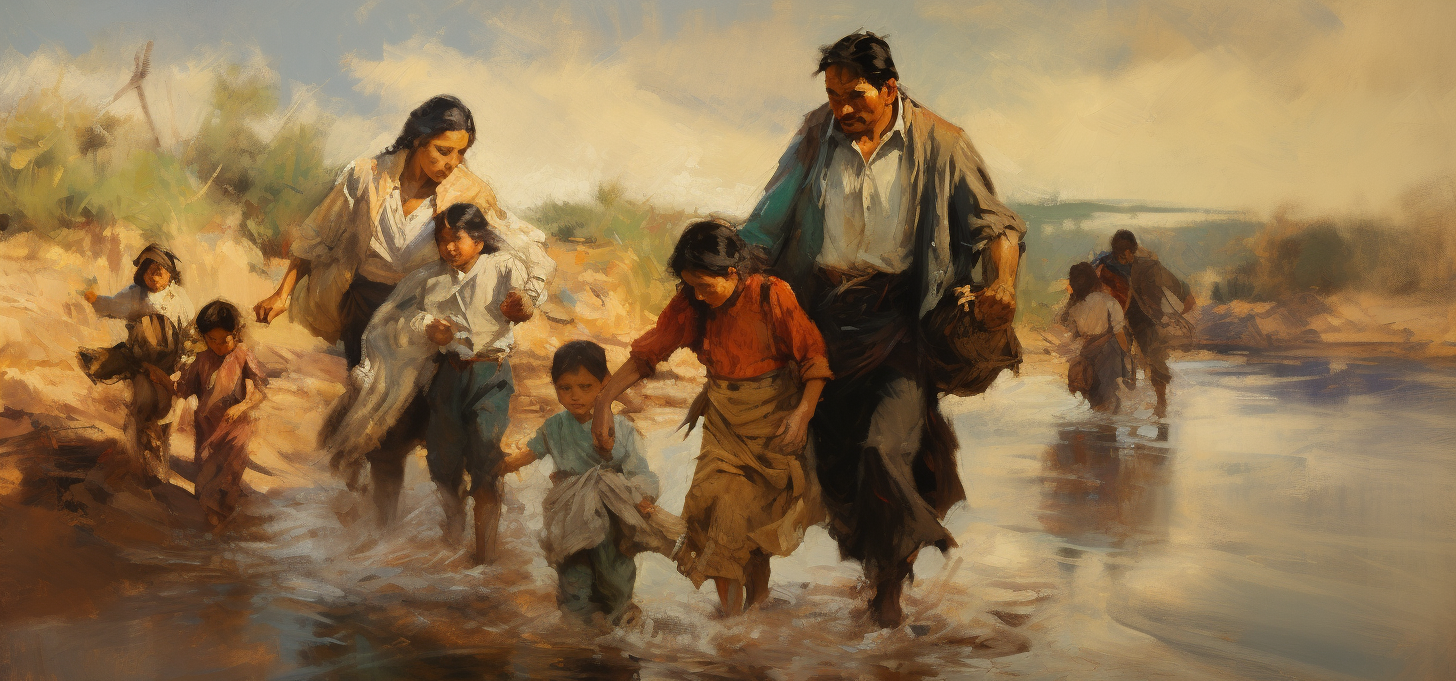
THE GREAT
LATINO
MIGRATION
If Frederic Remington had painted it.
(MOSTLY) INVISIBLE TRACES
1530-1986
The American South and Latin America have been in conversation with each other ever since the 1530s, when Hernando de Soto landed on what is today the southern East Coast in his failed attempt to colonize the region in the name of King Philip of Spain.
Hernando de Soto and his men raped, pillaged and tortured their way through the South East in seach of riches that never existed.
H. de Soto was the first European to reach the Missisippi, in 1542. He soon died of a fever. His body was left to sink into the muddy waters of the river.
As the early Spanish settlements of Florida turn to ruin and moss and the Spanish Quarter in New Orleans became the French Quarter in 1763 , Spanish speakers residing in the American South were few and far in between. The 1850 Federal Census records only four Mexican-born residents living in the Charleston-area at the time. And even though, in the 1920s, hundreds of Mexicans were brought into the Mississippi Delta (along with as many Chinese laborers) to fill up the empty rows left in the cotton fields by the Great Migration of African Americans fleeing Jim Crow, two decades later, the few that were left had assimilated and forgotten their Spanish.
“The Great Latino Migration”, a term coined by writer and journalist Paul Cuadros, is often referred to as an “invasion” by anti-immigrant advocates, however, according to Cuadros, it was quite the opposite.
This historical demographic shift can be seen as a de facto “invitation” by corporate America to come and work in the American South. Starting in the mid-1980s, business interests tied to the poultry, pork, carpet, construction and service industries, needing cheap, vulnerable and pliable labor to keep up with the demands of a growing world economy, started actively and aggressively recruiting workers south of the U.S. border. These migrant workers, following decades-old migratory patterns started by the Bracero program in the 1940s, came from remote indigenous villages of Guatemala, Mexico, Honduras and El Salvador. Unlike seasonal migratory farm work, these industries demanded a year-round workforce, causing many of these migrants to bring their families to El Norte (or the South) and begin to settle down.
Unlike other regions of the United States with long-established and settled Spanish-speaking communities, like Texas, California, and parts of Florida, the American South had never experienced a wave of non-English speaking migrants massive enough to disturb the very foundations of its “Southern” identity, that is until the Great Latino Migration.
Once these migrants settled, they sent for their spouses, children, extended families. and started having U.S. born children.
North Carolina, at the epicenter of this demographic change, saw its Latino population grow from 75,000 in 1990 to 1,180,000 in 2020, making it the state with the fastest Latino growth rate in the United States. This dramatic shift was felt more acutely in small rural towns like Siler City, North Carolina, where its Latino population went from not even registering in the 1980 census to becoming, in 2010, 49% of the population. More recently from a study in 2022, Latinos in Georgia represented 14% of the population, and contributed 28% of its economic growth, making their presence essential to the future of the state.





